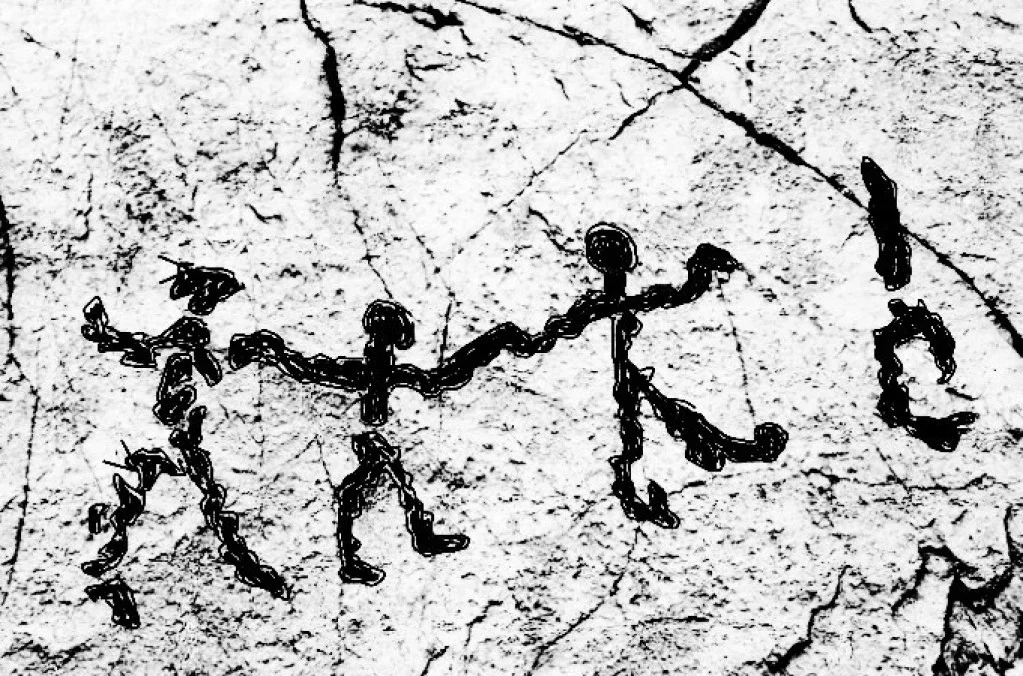Ancient art undoubtedly had great power and meaning in its own time, but what is truly remarkable is that it resonates in audiences even today. According to the guides and employees of the State Historical, Cultural, and Natural Park in Tamgaly, a UNESCO World Heritage Site, tourists often organize photo sessions inspired by the work of the ancient shaman artists in which they try to reproduce the action of one of the most striking and memorable petroglyphs of the sanctuary.
Archeologists and ethnographers have confirmed the existence of dance as a part of religious rituals since the Paleolithic period. Petroglyphs with images of people holding hands, as if dancing in a circle, have been recorded in many large rock art groups around the world, including in Kazakhstan. Perhaps the most famous of all the petroglyph circle dances in the country are the four dancing little men from Tamgaly Tas.i

According to most scholars, the circle dance is based on the worship of the sun, and the ritual was usually timed to coincide with holidays associated with the sun. These dances are known among many Eurasian peoples, including the Russian khorovod, the kolo (‘circle’) of the South Slavs, and the horo of the Romanians.
If we consider the petroglyphs of Tamgaly Tas and Eshkiolmes from this point of view, as examples of this ancient ritual, the circle dances in question were clearly organized for different purposes.
The circle dance of Eshkiolmes moves along the sun, that is, from east to west, as can be seen from the depiction of the figures’ feet. Circle dances that followed the sun’s path were usually performed on the days of the vernal equinox or solstice, and this is true of different cultures. For example, the Yhyakh holiday, a traditional summer festival of the Sakha people,i
But the little men of Tamgaly Tas go in the opposite direction, eastward, with one of the figures, the one on the far left, going against the direction of the circle. He and the little man to his right are shown in the pose of prayer or negotiating a pact for protection.
In the tradition of practical magic and folklore, the movement known as ‘widdershins’, or being against the sun, refers to the actions of black magic. In English folklore, for example, there are popular stories about girls or children who accidentally ran around a church or other sacred place against the sun, found themselves cursed, and entered the spirit world.
This explanation, however, is hardly applicable to this action. According to ethnographers, the Bashkirs,i
It has not yet been determined whether the moment depicted on the Tamgaly Tas petroglyph is a wedding ceremony or a commemoration of ancestors. Perhaps one day researchers will be able to answer this question.




